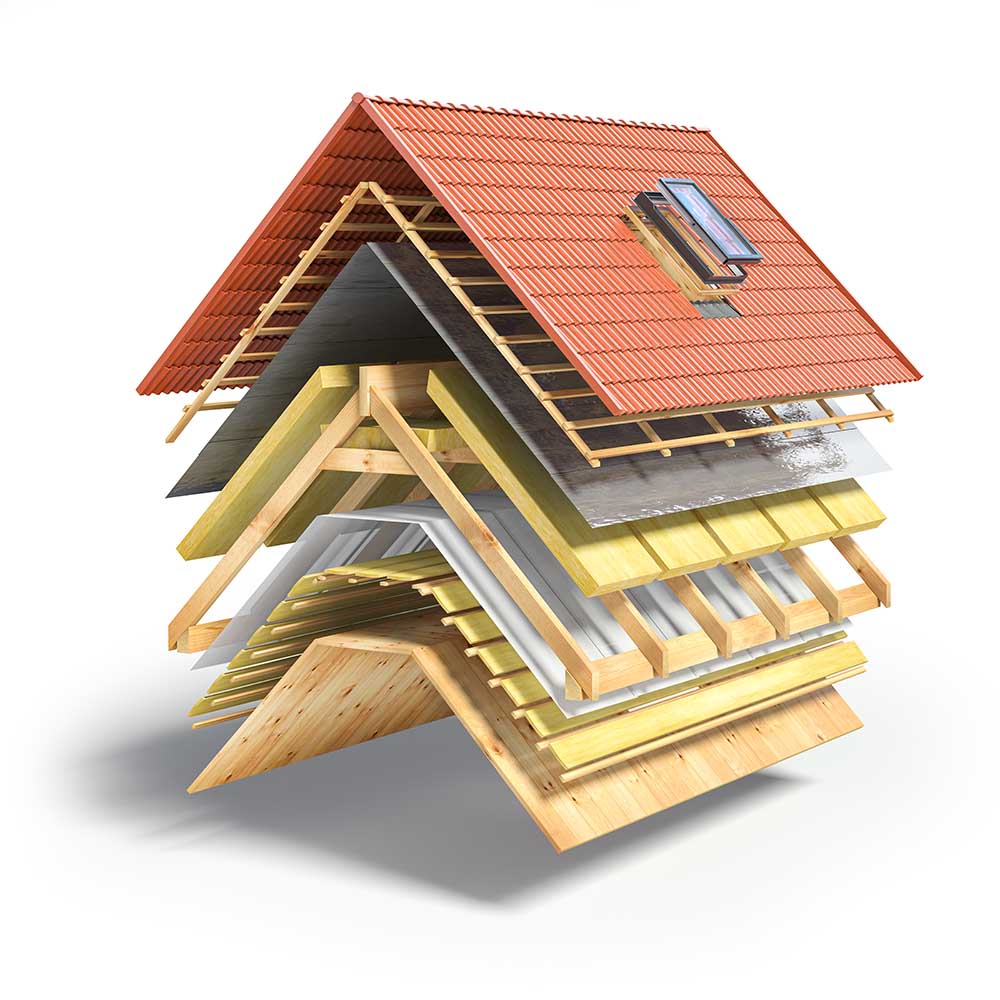Weatherproofing Your Roof: How to Prepare for Extreme Climate Conditions
Find out how to keep your home secure from extreme weather conditions!
Weatherproof Your Roof
Your roof is your home’s first line of defense against the elements, whether it’s torrential rain, intense heat, heavy snow, or powerful winds. Preparing your roof for extreme climate conditions is essential to ensure your home stays protected, energy-efficient, and durable over time.
With the right materials, design features, and maintenance practices, you can weatherproof your roof to withstand the unique challenges posed by your local climate and avoid costly roof repair.
In this comprehensive guide, we’ll explore how to choose materials, incorporate design features, and maintain your roof to keep it resilient in the face of extreme weather.

Understanding Your Local Climate
The first step in weatherproofing your roof is understanding the specific climate challenges in your area. Different regions face unique weather conditions that require tailored roofing solutions.
- Tropical and Coastal Areas: Frequent hurricanes, heavy rainfall, and high humidity.
- Cold Climates: Heavy snow, ice accumulation, and freeze-thaw cycles.
- Hot and Arid Regions: Intense heat, UV radiation, and thermal expansion.
- Moderate but Unpredictable Zones: Seasonal storms, hail, and fluctuating temperatures.
Once you identify your local weather patterns, you can choose materials and designs that address those challenges and prevent future roof repairs.
Choosing the Right Roofing Materials
The material you select for your roof plays a pivotal role in its ability to withstand extreme weather. Below, we break down the best materials for various climate challenges:
Hurricanes and High Winds
For regions prone to hurricanes and strong winds, durability and wind resistance are key.
- Metal Roofing: Known for its strength, metal roofing can resist winds of up to 140 mph or more when installed properly.
- Clay or Concrete Tiles: Heavy and wind-resistant, though they require professional installation to ensure they stay intact.
- Impact-Resistant Shingles: Designed to withstand flying debris and strong gusts, these shingles often meet industry wind-resistance standards.
Snow and Ice Loads
In colder climates, your roof needs to handle the weight of accumulated snow and prevent ice dams.
- Slate Roofing: Extremely durable and capable of supporting heavy snow.
- Metal Roofing: Excellent for snowy climates, as snow slides off easily, reducing the risk of accumulation.
- Composite Shingles: Reinforced with additional weight capacity to support snow loads.
Extreme Heat and UV Radiation
Roofing materials in hot climates must resist thermal expansion, UV damage, and heat absorption.
- Cool Roof Coatings: Reflective coatings that reduce heat absorption and lower indoor temperatures.
- Clay or Terracotta Tiles: Naturally reflective and effective at keeping homes cool.
- Thermoplastic Polyolefin (TPO): A reflective, energy-efficient material often used in flat roofs.
Hail-Prone Areas
Impact resistance is crucial in regions with frequent hailstorms. Without it, hail can cause a lot of damage and need emergency roof repair.
- Impact-Resistant Shingles: Engineered to withstand hail impact without cracking or breaking.
- Rubber Roofing: A flexible option that absorbs hail impact without sustaining damage.
- Metal Roofing: Durable and less likely to crack or puncture from hailstones.

Design Features for Extreme Weather Resilience
In addition to materials, incorporating specific design features can enhance your roof’s ability to endure harsh conditions.
Proper Roof Pitch
The slope or pitch of your roof affects its ability to handle weather conditions:
- Steep Slopes: Ideal for snowy regions, as they allow snow to slide off, reducing stress on the roof.
- Low Slopes: Suitable for windy areas, as they minimize wind uplift and reduce pressure on the structure.
Overhangs and Gutters
Well-designed overhangs and gutters help manage water flow and prevent damage:
- Extended Overhangs: Protect walls and windows from rain.
- Seamless Gutters: Direct water away from the foundation, preventing erosion and flooding.
Reinforced Roof Decking
The roof deck is a critical structural component. Reinforcing it with materials like plywood or oriented strand board (OSB) ensures greater resilience against wind and impact. Any damage might need roof repair to keep the structural integrity intact.
Ventilation Systems
Proper ventilation is crucial for regulating temperature and preventing moisture buildup. In cold climates, ventilation reduces the risk of ice dams, while in hot climates, it helps dissipate heat.
Weatherproofing Tips for Long-Term Durability
Even the most durable roofs require regular maintenance and additional weatherproofing measures to extend their lifespan.
Routine Inspections
Schedule professional roof inspections at least twice a year and after major storms. Inspections can identify:
- Loose or missing shingles that might need roof repair.
- Damaged flashing.
- Water pooling or drainage issues.
Seal Flashing and Joints
Flashing around chimneys, vents, and skylights should be checked and sealed regularly. Properly sealed flashing prevents water intrusion, which can lead to leaks and structural damage.
Clean Gutters and Downspouts
Clogged gutters can cause water to back up onto the roof, leading to rot and leaks. Keep gutters clean and ensure downspouts direct water away from the foundation.
Apply Waterproof Coatings
Applying waterproof membranes or coatings can enhance your roof’s ability to resist moisture. These coatings are particularly effective in areas with heavy rainfall or snowmelt.
Install Snow Guards and Ice Melt Systems
In cold climates, snow guards and heated roof systems prevent snow and ice from accumulating in dangerous amounts or creating ice dams.
Use Hurricane Straps
Hurricane straps reinforce the connection between your roof and the walls of your home, providing additional protection against wind uplift in storm-prone areas.
Energy Efficiency and Weatherproofing
Weatherproofing your roof doesn’t just protect your home—it can also improve energy efficiency.
- Reflective Materials: Reduce heat absorption and lower cooling costs in hot climates.
- Insulation Upgrades: Prevent heat loss in winter and heat gain in summer.
- Solar Panels: Not only do they generate energy, but they can also shield your roof from UV radiation.
Choosing the Right Contractor for Weatherproofing
Weatherproofing your roof requires expertise. When hiring a contractor, look for:
- Experience with Local Climate: Contractors familiar with your region understand its specific challenges and can recommend the best materials and designs.
- Certifications and Licensing: Ensure the contractor is licensed, insured, and certified by roofing manufacturers.
- References and Reviews: Check for positive feedback from past clients, particularly for weatherproofing projects.
- Clear Communication: A reputable contractor provides detailed estimates and answers all your questions.
The Cost of Not Weatherproofing
Failing to prepare your roof for extreme weather can lead to costly consequences:
- Water Damage: Leaks and moisture intrusion can compromise your home’s structure and lead to mold growth.
- Higher Energy Bills: Poor insulation and ventilation increase heating and cooling costs.
- Frequent Roof Repairs: A roof that isn’t weatherproofed will require constant maintenance, which adds up over time.
- Reduced Property Value: An inadequately protected roof can deter potential buyers and lower your home’s resale value.
Innovative Technologies for Weatherproof Roofing
Advancements in roofing technology have made weatherproofing more effective and accessible than ever before. These innovative solutions can help homeowners enhance their roof’s resilience against extreme weather conditions, improve energy efficiency, and reduce maintenance needs. Incorporating these technologies into your roofing project ensures long-term protection and peace of mind.
Impact-Resistant Roofing Materials
For areas prone to hailstorms or flying debris during storms, impact-resistant materials are a game-changer. Roof repair products certified by UL 2218 standards, such as Class 4 shingles, are designed to withstand significant impacts without cracking or breaking. These materials are often made from composite materials, rubberized asphalt, or metal, offering enhanced durability.
Cool Roof Technology
Cool roofs are designed to reflect more sunlight and absorb less heat than traditional roofing materials. This technology is particularly beneficial in hot and arid climates, where reducing heat absorption can significantly lower cooling costs. Options include reflective coatings, light-colored roofing materials, and advanced thermoplastic membranes like TPO or PVC.
Self-Healing Roofing Membranes
Self-healing roofing membranes are an innovative solution for minimizing leaks. These membranes use advanced polymers that seal small punctures or cracks when exposed to heat. Ideal for flat or low-slope roofs, self-healing membranes enhance waterproofing and extend the roof’s lifespan.
Smart Roofing Systems
Smart roofing systems integrate technology like sensors and IoT devices to monitor a roof’s condition in real time. These systems can detect leaks, temperature fluctuations, or structural stress, alerting homeowners before minor issues escalate. Smart roofing solutions are particularly useful in regions with unpredictable weather patterns.
Solar Roofing
Solar roofing not only generates renewable energy but also acts as a protective barrier for your roof repair. Integrated solar shingles or panels shield your roof from UV radiation, reducing wear and tear while lowering energy bills. They’re a great addition for homeowners in sunny climates looking for sustainable solutions.
By embracing these cutting-edge technologies, homeowners can significantly enhance their roof’s ability to withstand extreme weather conditions, improve energy efficiency, and reduce the need for frequent maintenance. Incorporating these innovations into your roofing project is a forward-thinking approach that ensures lasting protection.
Government Incentives and Insurance Considerations
Weatherproofing your roof not only safeguards your home but may also qualify you for financial benefits and insurance discounts. Many governments and insurance providers recognize the value of resilient roofing and offer incentives to encourage homeowners to make these proactive improvements.
Tax Credits and Rebates
In some regions, upgrading to energy-efficient or weather-resistant roofing materials qualifies for tax credits or rebates. Programs like the federal Energy Star tax credit incentivize homeowners to install reflective roofing materials that reduce energy consumption. Check with local authorities to see what programs are available in your area.
Insurance Discounts
Many insurance companies offer discounts to homeowners who invest in weatherproofing features, such as impact-resistant shingles or reinforced roof decking. These upgrades reduce the risk of damage during storms, which lowers the likelihood of insurance claims. Be sure to notify your insurance provider of any weatherproofing enhancements to your roof to take advantage of potential savings.
Disaster Relief Grants
For homeowners in areas prone to natural disasters, such as hurricanes or wildfires, disaster relief grants may be available to help offset the cost of roof upgrades. Programs like FEMA’s Hazard Mitigation Assistance (HMA) provide funding for projects that enhance home resilience, including roof reinforcements and impact-resistant materials.
Roof Certification for Home Sales
If you’re planning to sell your home, a weatherproof roof can be a valuable selling point. Some real estate markets encourage roof certifications, which verify the roof’s condition and its ability to withstand local climate challenges. A certified weatherproof roof can increase buyer confidence and boost your home’s resale value.
Long-Term Savings
While weatherproofing may require an upfront investment, the long-term savings are significant. Reduced energy costs, fewer repairs, and potential insurance discounts make these upgrades a financially sound decision. In regions with extreme weather, these savings can quickly offset the initial expense.
By taking advantage of available incentives and aligning your roof upgrades with insurance requirements, you can make weatherproofing both affordable and practical. It’s a smart move that not only protects your home but also provides financial benefits in the long run.
Keep Your Roof Weatherproof
Weatherproofing your roof is an investment in your home’s safety, efficiency, and longevity. By choosing the right materials, incorporating climate-specific design features, and performing regular maintenance, you can ensure your roof is ready to face the harshest conditions.
Don’t wait for the next storm or extreme weather event to reveal your need for roof repair. Take proactive steps now to protect your home and enjoy peace of mind, no matter what Mother Nature throws your way.

